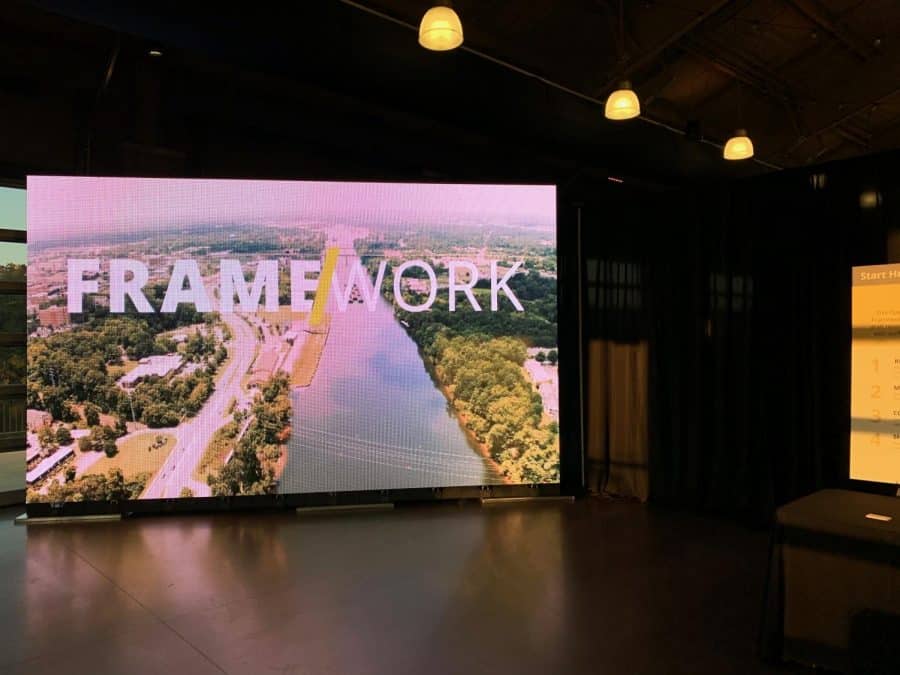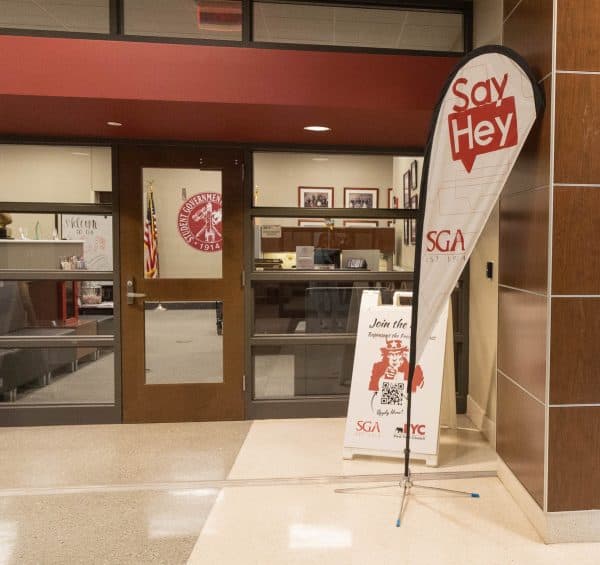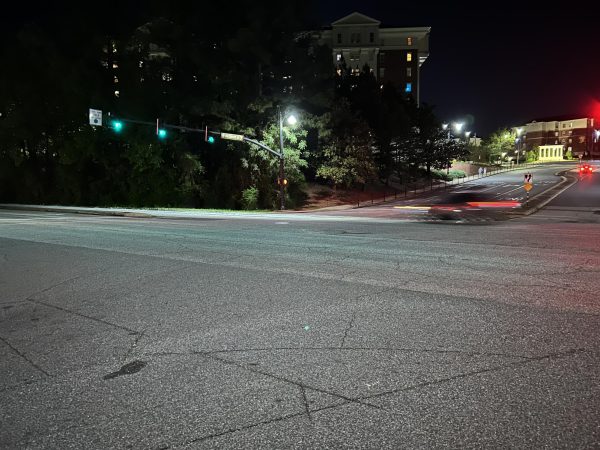Framework plan premiered to Tuscaloosa residents for feedback
November 13, 2019
After over a year of planning, the Tuscaloosa Steering Committee has finally introduced its Framework plan to overhaul multiple faulty aspects of the city. The committee held a public event this past week to present the comprehensive plan to the citizens of Tuscaloosa.
Over the course of the day, 430 residents appeared at the Tuscaloosa River Market to get a first look at the city’s Framework plan, which was presented through poster boards set up around the venue. At the door, visitors were given a page of orange stickers and were instructed to place them directly onto the boards, indicating an area in the plan that they felt should be treated as a priority.
In attendance on the City of Tuscaloosa side were various directors and members of the steering and city planning committees, multiple city counselors, Mayor Walt Maddox and other stakeholders in the plan’s outcome.
Ashley Crites, the city’s director of planning, has been integral to this plan since its inception in the summer of 2018.
“We had a lot of area-specific land-use plans before this,” Crites said. “What we were finding was that they were not doing the city justice as a whole.”
While plans like this are often created and admired, they usually lack funding and cannot get off the ground. That is why the planners involved with Framework decided to fund this project before it was even started.
“The city council started putting aside money so we could fund a planned update for the entire city,” Crites said. “We were finally able to be fully funded in 2018. We started moving forward from there. We started putting out proposals to get a consulting team, and we ended up with Planning Next out of Columbus, Ohio, and they’ve been amazing.”
As the plan underwent development, its importance became more obvious to those working on it.
“So, the main idea with a comprehensive plan is to provide that guiding document for not only land use decisions, but also for infrastructure decisions, for how we do experiencing venues and how we attract businesses into the community, how we attract recreational opportunities,” Crites said. “We want to do that through a plan, a document that says ‘Hey, community! Hey, council! This is the vision.’ That’s what makes it so important.”
Crites would also like to see the outdated codes that affect new business owners and residents undergo a facelift.
“This will start to lay out that simplification process,” Crites said. “We have a very complex, very cumbersome code from 1972. We want to get it to a point where it becomes easier for a business owner to know where they can locate. It becomes easier for a neighborhood resident to know that something going in on the property next to them won’t be disruptive. That’s where something like this plan will be important for the entire community.”
While this plan tackles Tuscaloosa as a whole, Crites and her team paid special attention to its effect on the University as well.
“We made sure that the UA campus master plan and our comprehensive plan could align,” Crites said. “From a student-specific perspective, this is a lengthy process. We won’t even start doing code changes until probably mid-2020 into 2021. Those [students] here today probably won’t see any big changes, but those in the future will.”
Developmental engineer Brad Matthews also took campus and city connectivity into consideration when drafting the Framework plan.
“Some things that we do have as a priority is connectivity between downtown and campus, and providing people with a better way to get downtown when they’re leaving campus,” Matthews said. “That’s one of the projects that are identified here [on the posters] and are being addressed in the Mayor’s Elevate Tuscaloosa plan.”
While Elevate Tuscaloosa is a separate initiative, the two projects go hand in hand by ensuring the best long-term plan for the city.
One councilwoman in attendance, District 3’s Cynthia Lee Almond, said she was proud to finally see the committee’s work come together.
“I know these people have been meeting for months now and represent different areas and interests of the city, and so I commend them on their work,” Almond said. “They’ve worked really, really hard.”
Ultimately, the council will be the ones to pass these plans and approve each of the steps along the way.
“You can tell by everything that’s here that it’s a lot to take in, and so our challenge is going to be, sort of, taking in the information as quickly as possible, disseminating it, prioritizing it and figuring out what it is that they’re presenting to us,” Almond said.
Tuscaloosa Mayor Walt Maddox was also present, greeting citizens and developers throughout the night. Maddox, who has served as mayor since 2005, has seen, contributed to and approved plans like this throughout his time serving.
“We have done a great job in the last 15 years of elevating our community,” Maddox said. “But, if we’re going to be competitive with our competition throughout the United States then we need to take it to the next level. ‘Framework’ is the vehicle that is going to get us there.”
Maddox then explained that the first few steps of the integration of Framework include land-use and zoning regulation assessments.
“From here on I will take this information, create a recommendation for the council, and we will continue the public hearing aspect. This will still be a multi-year, multi-opportunity for public hearing process.”
Maddox said the “heart of recommendations” will come as soon as late winter or early spring.
Many citizens of Tuscaloosa also came out to the event to get a glimpse at the future of their city. As they walked the perimeter of the venue and marked their priority issues, citizens also discussed the future of Tuscaloosa.
Multiple citizens expressed their desire to see a more bike-friendly Tuscaloosa.
“We’re more interested in seeing Tuscaloosa becoming a more bike-friendly place,” a University professor stated. “I haven’t lived in a place, ever, where people just get in their cars and go everywhere. It’s just not healthy for them, it’s not healthy for the city, it’s not healthy for the world.”
Many residents also expressed concern about the general upkeep of Tuscaloosa, citing many concerns about parking and increasing amounts of student housing.
“I think the infrastructure, parking and the preservation of historic districts are important, and giving some identity to the downtown businesses,” Easty Brown, a local resident, said.
On the whole, citizens seemed to approve of the presentation.
“I’m very encouraged by what the committee has done,” resident Michele Massey said. “Everything is very well thought out and very well put together. I’m really looking forward to seeing all of this implemented.”
“I think it’s covered very thoroughly,” Tom Gonnering, another resident, said. “In fact, for me, it’s almost too thorough, ‘cause I’m not interested in a lot of things, like down on 69-South and all this stuff, but there’s a lot of things that I’m very interested in.”











